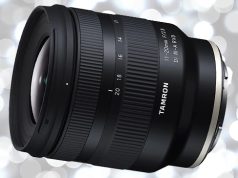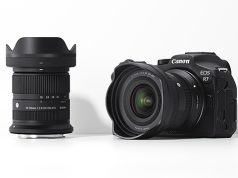At the Stop & Shop in Berkeley Heights, NJ, they no longer process rolls of film for longtime customers. The chain discontinued film processing in 300 of its stores in the Northeast last year.
The grocery chain’s not alone. These days, select supermarkets, discount retailers, specialty photo shops and drugstores are abandoning film processing services that have become much less lucrative in recent years as more people adopt digital cameras. In its place: the plethora of help-yourself kiosks released in recent years starting at around $5,000 per unit from a host of photo and CE manufacturers like Kodak, Fujifilm, Mitsubishi, Noritsu, DNP, Sony and HP to name but a few.
During the last few years, the sale of film has decreased by a rate of almost 30 percent, according to the Photo Marketing Association (PMA). In 2006, 204 million rolls of film were sold compared to 800 million sold in 1999. In a photo industry that hadn’t changed much in 25 years prior to digital, film developing is becoming a niche service reserved for hobbyists and consumers who may not have access to home computing.
“There are some tried and true people,” says Bill Ferguson, owner of Hokanson Camera, an independent shop opened since 1936 in the small town of Manistee, Mich., “Nearly everyone has switched to digital.”
Ferguson says while there are some holdouts who still use film, the majority of customers are digital users. “We’re doing 20 percent of the business we were doing four years ago as far as rolls of film,” he says. The biggest hardship, Ferguson says, is replenishing film-processing materials. When not in use, many of the developing chemicals can expire and it’s becoming increasingly more difficult and expensive to restock these products.
Of the few traditional film users he serves at Hokanson many are local law enforcement officials and casino business owners who use Polaroid film to make I.D. badges quickly. Seniors also fall into this dwindling demographic.
“Not everyone has a computer,” says Ferguson. “And not everyone wants a computer. A digital camera doesn’t make much sense for them. There are also still those people who operate under the premise that digital cameras are not as good quality.” He says he may have agreed with them a few years ago, but certainly not since the emergence of the new breed of DSLRs, which he says are “taking off” at his shop much like 35mm film cameras did in the 1980s. He’s expecting an increase in these popular DSLR sales from this year’s tax rebates.
Disposable Culture
Ferguson also expects to handle at least a small percentage of single-use cameras coming back into his store from family vacations this summer. “We were selling huge numbers of disposable cameras for awhile,” he says. “We sold to small mom-and-pop stores in Michigan and tourist destinations.” He estimates at its peak, he was selling 50,000 to 60,000 each high season. Even though that number has shrunk drastically, he still encounters consumers who are buying them for special events and travel. Most of these people have digital cameras they don’t want to damage at amusement parks or near water. And a few people use these disposables exclusively.
Tricia Meehan, a single 30-year-old real estate professional in Philadelphia, is one of those consumers. At a recent surprise birthday party, Meehan was the only person under the age of 40 using a film camera. Whereas the majority of guests were using point-and-shoot digitals and the occasional DSLR, Meehan opted for a one-time-use camera by Kodak.
“To me it’s easier,” she says, admitting she doesn’t know anything about digital technology and isn’t worried about cameras like these becoming obsolete. “I could pay a lot of money for a digital and lose it, whereas disposables are cheap.”
Meehan admits that while most of her friends use digital cameras, few of them actually print their pictures, something she thinks is the most important part of the process. “I’ve never had a problem with a disposable,” says Meehan, who gets her film processed at a local CVS drugstore “because they always come out clear.”
About 90 miles west of Philadelphia in the small town of Lebanon, Penna., Georgie Mowery, a 48-year-old mother of a school-age son, is a self-described technophobe. Mowery, who doesn’t even own a cell phone, only recently purchased a laptop computer for e-mail. Despite her tendency to avoid all things tech, her goal is to buy a simple point-and-shoot digital camera this year.
“I don’t understand them,” admits Mowery, who usually avoids most technology that requires a computer hook-up since she still uses a dial-up Internet connection. But she changed her mind after picking up photos from a recent trip to Nashville.
“We were in a nightclub and we saw the drummer from Poison,” says Mowery, who took his picture using a disposable film camera. Excited about seeing the photos, she dropped off the film at a local Rite-Aid as soon as she got home. “I got my film developed and it didn’t turn out!” she says. “My friends’ photos always look so much better than mine.”
Learning Center
For digital virgins and hobbyists alike, stores like Hokanson offer photo classes focused on digital picture taking. “We run classes one night a week,” says Ferguson, who estimates 12 to 15 regulars usually participate at each session. “They want to take better pictures using more special effects,” he says. “The people who are really good, accomplished picture takers have already switched to digital.”
In many respects, traditional film users who have made this switch have sustained their love of prints unlike many younger, digitally-weaned users who post images online and share photos on their cell phones and iPods. Often the same consumers who had taken advantage of one-hour film processing in the past are now visiting digital kiosks with their memory cards to crop and enlarge images.
To appeal to this lucrative demographic, most of whom are women, Ferguson installed four kiosks in his store. “There’s usually someone in the store all the time ordering prints,” he says. “We also do a big business with scrapbookers.”
According to a survey by CK Media, more than 80 percent of scrapbookers are between the ages of 30 and 59 years of age, while those aged 40 to 49 make up 31 percent of the market. It’s ultimately the same demographic digital photo companies are targeting with new digital cameras and in-home printers. More than 90 percent of scrapbookers use digital cameras, reports PMA, which estimates that this year, more than 20 billion photos will be taken in the U.S. and about 17.8 billion of those will be saved with about 10 billion reaching the print stage.
Ferguson says female customers have proven to be most prolific when it comes to switching from traditional film and printing digital photos. “Back in the late 70s and early 80s when I started working here, the clients were almost exclusively male,” he remembers. “I bet we’re 90 percent female now.” Many of his customers include young mothers. “They order 300-to-500 prints without batting an eyelash,” says Ferguson, who says digital prints average between 16 and 19 cents each at his shop.
Realizing the potential for even greater business among this demographic, Ferguson’s personally reached out to female customers and scrapbookers by teaching one-hour digital camera seminars at local clubs. “Usually on Saturdays, scrapbooking clubs work at the local gym,” he says. They arrive with enormous cases of materials and sometimes work all day long on their projects. At these sessions, Ferguson provides tips about photography and answers questions about digital cameras. He says he sees many of these same women in his store in the following weeks. They use the kiosks religiously rather than printing at home, which can be more expensive given the amount of photos they tend to process at one time.
“We’ve gotten into doing more enlargements because of digital,” says Ferguson. “People who never used to order enlargements are ordering them now.”
The opportunity to customize one’s photographs is a huge factor pushing traditional users into the digital realm. But there are still retailers who offer traditional services, even if they are disappearing.
Going Extinct
Mega-retailers like Wal-Mart and Walgreens still process film the old-fashioned way, even if the emphasis on digital can be seen prominently throughout the photo departments, where users can test out digital cameras and visit kiosks to customize their own photos in seconds. Walgreens reported in The New York Times last year that its photofinishing sales increased 58 percent in 2006 (“Film Drop-Off Sites Fade Against Digital Cameras,” Oct. 9, 2007).
Photo manufacturers like Eastman Kodak Company, Fujifilm and Polaroid have felt the digital pinch as their film business has fallen sharply in the U.S. over the last several years. As a result, Kodak has begun marketing inexpensive film cameras in third-world countries where technology is lagging behind Europe, Asia and North America. The company reported record sales for film in India last year.
Fujifilm, simply by taking a look at the company name, remains committed to the development of 35mm films and certainly has no plans to drop the word “film” from the company name. And of course, Polaroid recently announced they were discontinuing production of the instant film business, much to the chagrin of many in the imaging industry. yy





